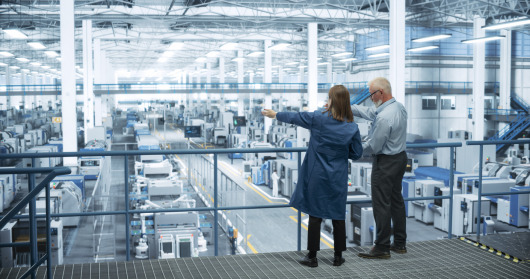
How Quality Engineers Help Manufacturers with Their Bottom Line

Manufacturing costs keep rising. Materials cost more. Labor gets expensive. However, there’s one professional who can help reduce these costs while maintaining high quality, a quality engineer.
Quality engineers don’t just check products. They save companies serious money. Here’s how they do it.
What Quality Engineers Do
Quality engineers work differently from what most people think. They do inspect finished products, but their job goes beyond that. They aim to prevent problems before they happen.
Quality engineers develop detection systems that identify defects early. They create testing procedures and analyze data to recognize trends. Their primary responsibility is to collaborate with teams to identify and resolve problems at their source.
These professionals have a thorough understanding of manufacturing from start to finish. They know where problems can occur and have the knowledge to prevent these issues from happening again.
The Hidden Cost of Poor Quality
Manufacturers lose more money than they realize due to the production of poor-quality products. Companies end up spending several times more when their products fail. The first cost comes from defective materials. The company has to spend money to produce a new product after the initial one fails. They also pay for delayed shipping, dissatisfied customers, and other expenses.
Studies show that substandard quality leads businesses to lose 10-15% of their overall revenue. Such losses would be devastating for any business operation.
Quality engineers reshape this equation. They focus on preventing problems before they occur rather than fixing them afterward. This proactive approach leads to financial savings through various channels.
Reducing Waste and Rework
Quality engineers focus on eliminating waste at its source. Their primary responsibility is to identify defects. The team develops prevention systems for defects once they determine their causes.
Consider a simple example. A manufacturing line produces 1000 parts daily. The lack of quality control measures results in 5% defective products. The daily production yields 50 faulty parts.
The production of defective parts leads to financial losses because it requires additional materials and workforce expenses. The company incurs financial losses due to machine downtime and excessive energy consumption. Workers must dedicate their time to both repairing defective parts and disposing of them.
A quality engineer would analyze this problem. The team would determine that machine calibration should occur every 4 hours instead of the current 8-hour interval. The quality team discovers that temperature variations hurt product quality. The team can achieve defect rates below 1% by addressing the fundamental causes of problems.
The implemented reduction leads to significant monthly savings of thousands of dollars. The mathematical approach produces strong yet basic results.
Preventing Costly Recalls
A company faces significant financial losses when product recalls occur. The costs of shipping replacement parts, along with customer service expenses and shipping fees, contribute to these losses. As a result, the brand’s reputation is damaged.
Quality engineers prevent recalls by their ability to identify and resolve problems early. They create thorough testing procedures. The company utilizes tracking systems to monitor quality throughout the manufacturing process.
Implementing proper quality engineering practices results in a 70% decrease in post-release fixes, according to industry data. The associated financial savings are significant.
Improving Manufacturing Efficiency
Quality engineers also enhance manufacturing processes and systems to improve efficiency.
For example, a quality engineer could redesign the production line layout, eliminate all nonessential operations from the process, or establish consistent operating procedures that apply to all shifts.
The improvements implemented shorten production operation times and lower errors. Combining fast production with fewer mistakes results in reduced unit costs.
Using Data to Drive Decisions
Quality engineers today rely on data as their main resource. They monitor the production process using statistical process control. Tracking key production metrics includes defect rates and cycle times.
The collected data allows them to make smart choices. It shows them the exact locations of problems instead of guessing. The team can focus its improvement efforts on areas that will yield the greatest results.
Manufacturing KPIs indicate that companies employing data-driven quality approaches experience efficiency improvements of 20-30%. That’s a massive return on investment.
Training Teams for Better Results
Quality engineers work as part of a team. They train other workers on quality standards. This approach enables the organization to cultivate a quality-focused culture.
Early problem detection is possible when workers understand quality standards. They also propose improvements. The influence of the quality engineer grows through the team’s combined efforts.
The training process reduces employee departure rates. Workers who understand their role in quality feel more engaged and tend to stay in their positions at the company. The decrease in employee turnover results in lower costs for recruitment and training.
Supplier Quality Management
Quality engineers maintain relationships with suppliers as part of their responsibilities. The team helps suppliers meet quality standards. The quality control process prevents defective materials from entering the production process.
Collaborating with suppliers offers several cost-saving advantages. The first advantage is the reduction of incoming defects. Supplier quality management helps prevent production delays and ensure optimal product quality. Additionally, it fosters stronger relationships with suppliers.
Implementing supply chain quality management can cut material expenses by 5-10%. Large manufacturers save millions annually by monitoring supplier quality.
Technology and Automation
In the modern era, quality engineers utilize advanced technological tools. They implement automated inspection systems as part of their practice, enabling real-time production monitoring through the use of sensors.
These technologies identify defects faster than human inspection. They also produce consistent results. Automated systems run continuously all day without needing rest.
The costs of initial technology acquisition result in quick financial returns. Automated quality systems recover their initial investment through defect reduction and efficiency gains within 18 months.
Compliance and Standards
Quality engineers ensure compliance with both industry standards and regulatory requirements. This approach helps prevent costly fines and legal issues. Additionally, the company gains access to new market opportunities.
Several customers require specific quality certifications to operate. Quality engineers help organizations navigate the process of obtaining these certifications. Achieving compliance enables businesses to tap into new market opportunities.
Implementing compliance standards reduces the liability organizations face. Companies with strong quality systems encounter fewer legal issues. Establishing quality systems also results in lower insurance premiums.
Measuring Return on Investment
Quality engineers track their impact on the bottom line. They measure cost savings from defect reduction and other strategies. They also track efficiency improvements.
The return on investment ranges from 3 to 5 times, with some organizations achieving even higher financial gains.
The ROI comes from various sources. Cutting waste, reducing recalls, improving efficiency, and enhancing customer satisfaction all contribute to increased profits.
Long-term Business Benefits
Quality engineers create lasting value. The systems they implement continue to generate financial savings for the organization long after the initial setup. The knowledge they acquire stays within the company.
Organizations that maintain strong quality programs attract a better customer base. They also command higher prices. Quality becomes a competitive edge.
The Strategic Advantage
Quality engineers not only save money but also improve quality. Companies known for quality can charge premium prices. They also build customer loyalty through good user experiences.
This loyalty translates to repeat business. Repeat customers cost less to serve. They also provide predictable revenue streams.
Making Quality Everyone’s Job
Quality engineers who excel take responsibility for quality at all levels of the organization. These engineers create systems that encourage every employee to adopt quality standards. Such cultural changes have lasting impacts.
Organizations that embed quality into their cultural foundation will experience natural improvements. Workers suggest improvements and take pride in their work. The system creates a continuous pattern of ongoing improvement.
Your Next Step Forward
Quality engineers deliver tangible results. They lower costs, boost efficiency, and prevent issues. Most importantly, they help companies develop sustainable competitive advantages.
Are you ready to hire a quality engineer to boost your bottom line? We know the impact quality engineers can have on your business. Our team specializes in connecting manufacturers with highly qualified engineers who produce results. Contact us today to discuss how we can help you find the right quality engineer for your team.













